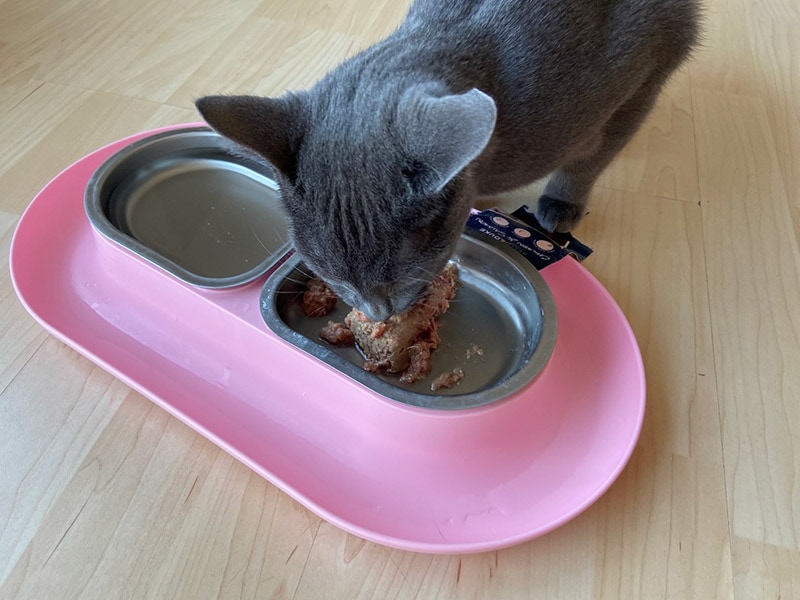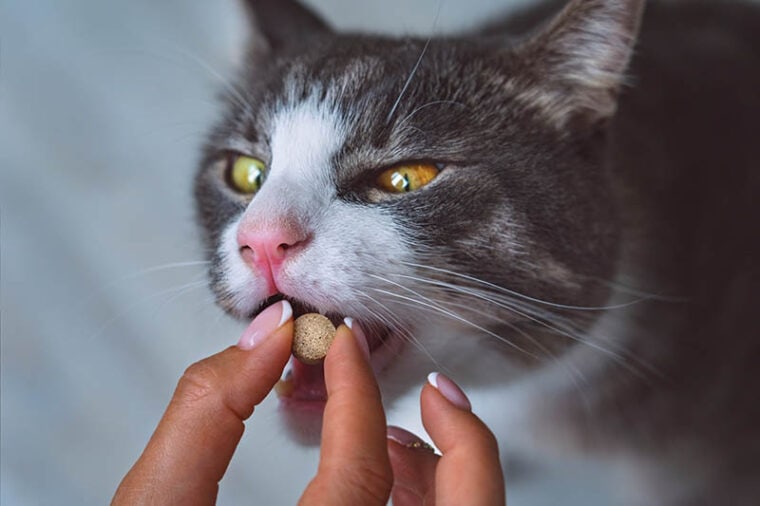
Having a sick cat can be a traumatic experience for you and your pet, and when you need to give them medication, it can be even more difficult, especially if you lack experience. If this sounds like your situation, keep reading while we share with you several tips and tricks you can use to make sure your cat gets healthy. We’ll carefully explain each method and provide you with a video or image where possible to help you provide the best care possible for your pet.
 The 9 Tips for Giving Your Cat Medicine
The 9 Tips for Giving Your Cat Medicine
Giving Pills to Your Cat
1. Pheromones
One of the first things you need to do if you want your cat to take its medication is to get it in a relaxed state. If the cat thinks you are trying to do something, it will be much faster to react to anything up your sleeve. Provide a quiet area without other people or pets where your cat can feel safe, especially if it isn’t feeling well. Pheromones can be extremely effective on some cats to help keep them calm and make them more likely to cooperate.
Pheromones are natural chemicals that cats create and use as a means of communication for many things, including comforting messages, marking their territory, and finding a mate. You can purchase synthetic pheromones in various formats such as plug-in diffusers and sprays. Many pet parents find them very helpful to help cats adapt to new situations, reduce certain types of aggression, and promote a calmer temperament.
2. Wrap Your Cat In A Blanket
Frightened cats can cause damage with their nails, so we recommend carefully wrapping your cat in a blanket so you can administer the medication safely without harming the cat. The towel will keep the cat stable while providing the cat with safety, comfort, and warmth. This technique is called a cat burrito or burrito wrap and is commonly used in veterinary clinics to gently handle cats while relieving their stress.
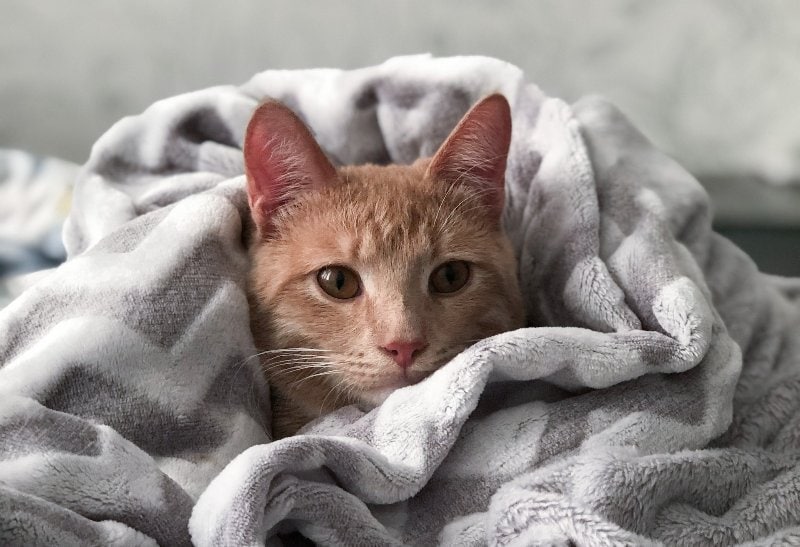
3. Feed The Pill
With the cat comfortable, you can place the pill in the cat’s mouth by grasping the top of the head with one hand and lifting it so the nose points at the ceiling. When the cat is in this position, its jaw will usually drop open, or you can gently open it while holding the pill between your index finger and thumb. Place the pill inside the mouth toward the back of the tongue and close it before returning the head to normal position and gently blowing on the nose while stroking the throat. Blowing on the nose causes the cat to lick its nose and swallow.
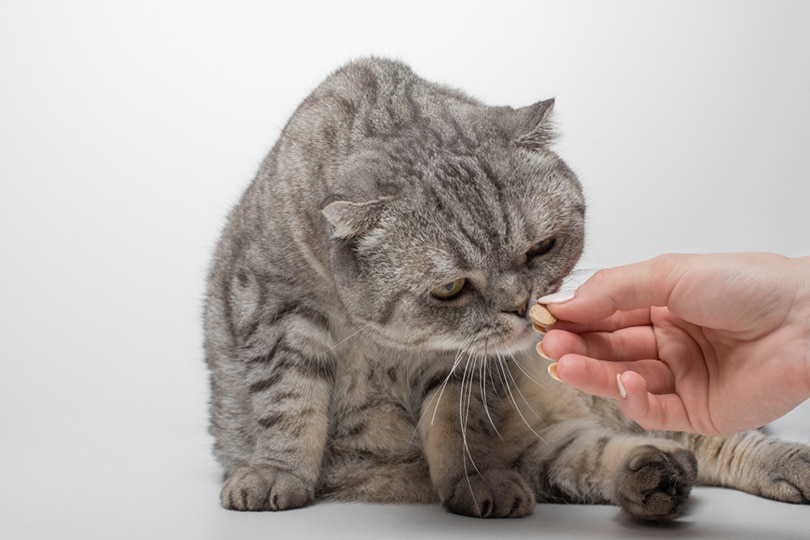
4. Hide Medication in Food
Unfortunately, cats are not as easy to trick by putting the medicine in their food. Most owners will tell you that mixing the pill with wet food works well to get your cat to eat it, but it will only work once. The same goes for most treats with a pocket for medication. The best way to use food to get your cat to eat a pill is to chop up the pill into tiny pieces (first check with your vet if this is possible). Try to give them an “empty” treat first followed by another one with the pill in the food.
If the cat eats the dry mixture, let it. Otherwise, you can attach it to your finger using a soft teat like the Hartz Squeeze Up and feed it to your cat like that. This extra treat, along with the attention, can often convince the cat to eat the pill.
5. Use a Pilling Device
Pilling devices can be very helpful for some families. They can be used to deliver the medication over the back of the tongue so you do not have to place your fingers in your cat’s mouth.
It consists of a syringe-like device with little forceps at the end, where you place the pill or capsule. Then you hold your cat’s head like you would if you were giving the tablet directly with your fingers but instead, you insert the pilling device. Once the tip of the pill dispenser is in your cat’s mouth you just need to press the plunger to release the pill, close your cat’s mouth, and gently blow their nose to encourage swallowing.
6. Use Gelatin Capsules for More Than One Pill
It is possible that your cat may need to take more than one pill at a time. For these cases, it can be very useful to use an empty gelatin capsule where you can place more than one medication. Instead of having to give multiple pills, you only have to pill your cat once. You can administer this gelatin capsule the same way you would give a single tablet. Always check with your vet that this option is valid for your kitt
7. Take Your Cat to The Vet
If none of the above methods work, and you are desperate to give your cat medication, most veterinary clinics will give your cat the medicine for a small fee. Most cats don’t like going to the vet often because they don’t usually like traveling in cars or cat carriers. It can also get quite expensive if your cat needs medication long-term. The ideal scenario would be that your vet or vet nurse gives you a practical demonstration of the best way to give medication to your cat.
Giving Liquid Medication to Your Cat
8. The Syringe Method
You will usually deliver liquid medication via a syringe that you squirt into the cat’s mouth. This method is sometimes easier than pills but still takes practice. Most medicines use a 1-milliliter or a 3-milliliter syringe, and the one you use depends on the amount of medication and personal preference.
The steps to deliver the liquid are the same as for feeding the pill, except your cat can taste the liquid better, so it’s harder to use tricks like putting it on your finger, so the syringe is the only option.You need to deliver the medicine through on of the sides of you cat’s mouth, avoiding administration to the tip of the tongue.
Some medicines can make your cat drool and foam at the mouth, which can be an alarming experience to unsuspecting pet owners, so be prepared for this the first time you give your cat their medication and let your vet know if the drooling is excessive.
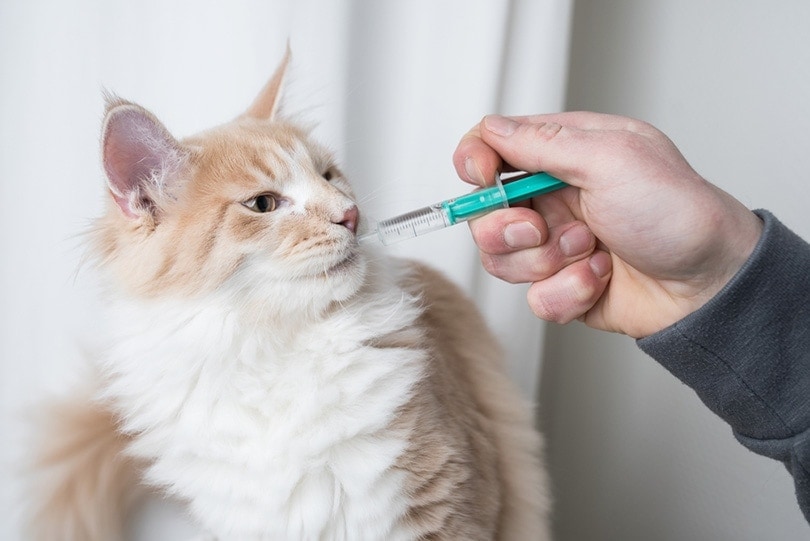
9. See If It’s Available as A Transdermal Medication
Some medications are also available in a transdermal form, and these are much easier to administer. You give your cat transdermal medication by applying it to their skin, most often to the inside of their ears. Most cat owners prefer this method, but not all medications are available, and there may also be an additional cost to get it in this form.Your vet can inform you if the medication your cat needs is available in this form.
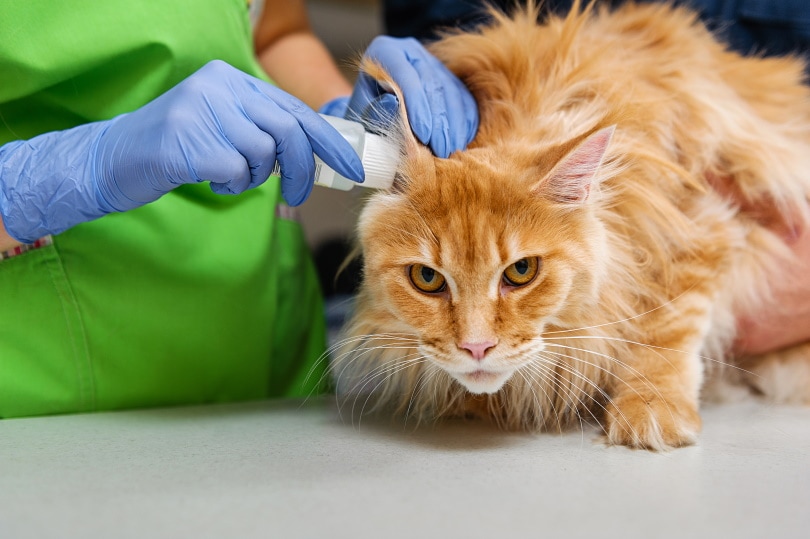
Summary
Unfortunately, unless your cat only needs a single dose of the medication, hiding it in the food isn’t as likely to work on cats as dogs. We found that crushing them up and mixing them with soft treats works well, especially if your cat is used to eating off your finger. However, that method may not last forever if your cat discovers your intentions. Once you learn to hold the head and insert the pill, the process will take less than one minute and won’t cause any stress for you or your pet.
We hope you have enjoyed reading over this short guide and found the answers you needed. If we have helped you nurse your cat back to health, please share this guide to giving your cat medicine on Facebook and Twitter.
Featured Image Credit: Creative Cat Studio, Shutterstock

 The 9 Tips for Giving Your Cat Medicine
The 9 Tips for Giving Your Cat Medicine